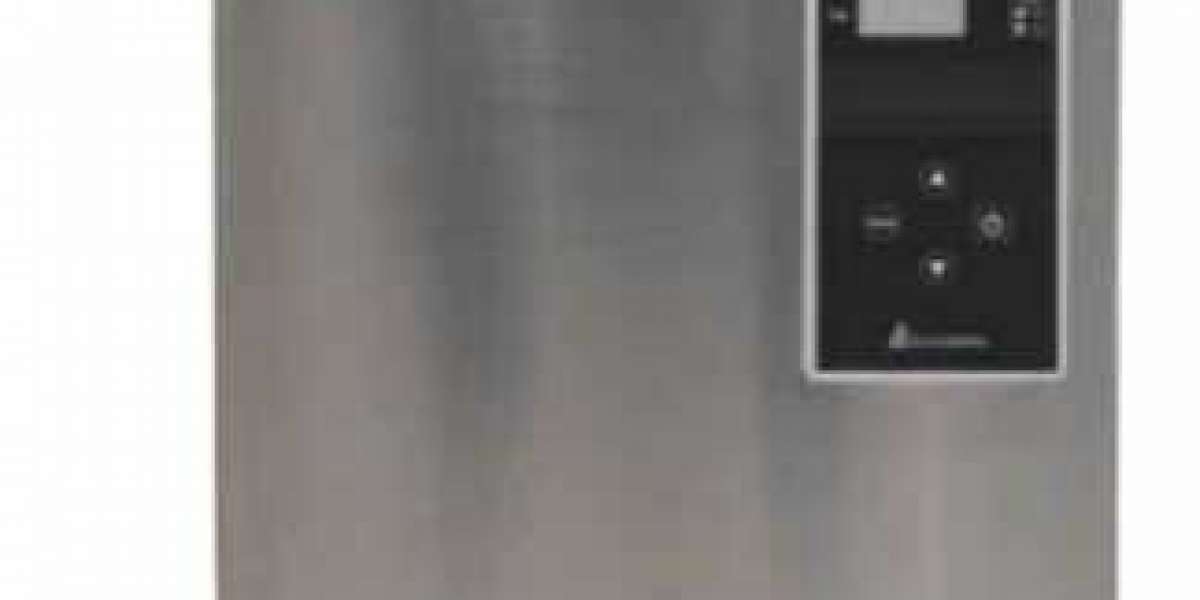A vertical autoclave is a type of sterilization equipment that can be found in medical facilities, research laboratories, and other types of establishments for the purpose of sterilizing a variety of equipment, as well as media, and other types of materials. This type of equipment is used for the purpose of preventing the spread of disease. This particular kind of autoclave is known as a vertical autoclave because it is designed to be used in a vertical orientation. The chamber of this autoclave is positioned atop the heating element as well as the controls for the machine.
Vertical autoclaves work by subjecting the materials they're used on to a combination of steam and pressure in order to sanitize them. The sterilization chamber is then hermetically sealed after the components that are to be sterilized have been placed inside the chamber. After that, the bottom of the chamber is completely soaked in water, and the temperature inside the autoclave is raised to produce steam. It is more likely that any and all microorganisms will be destroyed as a result of the temperature increasing, which is caused by the accumulation of steam within the chamber, which in turn causes an increase in pressure within the chamber.
The temperature and pressure settings of the autoclave will be determined not only by the materials that are being sterilized but also by the particular requirements of the process itself. At the end of the sterilization cycle, the pressure and steam are both released by the autoclave. At this point, the contents of the chamber can be removed from the autoclave without any risk of contamination.
Vertical autoclaves are easy to operate, have a high level of effectiveness when it comes to sterilizing materials, and have the capacity to sterilize a large volume of materials at the same time. They also have a high degree of versatility and can be applied to a wide range of different activities and achieve a variety of different goals.
What kinds of materials can be sterilized using a vertical autoclave, and what kinds of materials cannot?
By utilizing a vertical autoclave, one is able to successfully sterilize a wide range of different types of materials provided that they are able to withstand extremely high temperatures and pressures. The items and substances listed below are some examples of the kinds of common things that can be sterilized using a vertical autoclave:
The term "laboratory equipment" refers to a wide variety of instruments and tools used in laboratories, including but not limited to glassware, pipettes, petri dishes, and other similar items.
The term "media" refers to the culture media, agar plates, and other types of media that are used in a wide variety of scientific research. Other types of scientific research also use media.
Scalpels, forceps, needles, and other implements of a medical nature that are used during surgery must be sterilized before use. Surgical instruments include these implements.
Towels, gowns, and a wide variety of other types of fabrics are all examples of common types of textiles that can be found in clinical and research settings.
Waste consists of biological and medical waste that needs to be sterilized before it can be disposed of in an appropriate manner.
It is essential to keep in mind that some components, such as plastics that are prone to melting or deforming when subjected to high temperatures and pressures, may not be suitable for sterilization in a vertical autoclave. This is something that must be kept in mind at all times. In circumstances such as these, it may be necessary to turn to alternative methods of sterilization, such as irradiation or gas sterilization, in order to meet the requirements of the situation.
What are the advantages of using a vertical autoclave instead of a traditional horizontal one?
When it comes to the process of sterilization, the utilization of a vertical autoclave provides a number of benefits, some of which include the following:
Vertical autoclaves have a very high capacity for sterilizing a wide variety of materials, making them ideal for large-scale applications. They utilize steam and pressure to eradicate all types of microorganisms, such as bacteria, viruses, and spores, in a period of time that is considered to be quite brief.
There is a wide range of sizes available for vertical autoclaves, and each one has the capacity to hold a significant quantity of material at once. These autoclaves are famous for the large capacity that they possess. This can save time and increase efficiency, particularly in settings such as a laboratory or medical facility that require routine sterilization of large quantities of materials. These kinds of facilities typically have a lot of materials that need to be sterilized.
Vertical autoclaves are well-known for their versatility, and as a result, they are capable of sterilizing a wide range of materials. These autoclaves can be used to sterilize laboratory equipment, media, surgical instruments, textiles, and waste, to name just a few of the many types of materials that can be sterilized. They are suitable for a wide variety of applications as a result of this, which contributes to the high degree of versatility they possess.
In general, vertical autoclaves are simpler to operate than horizontal autoclaves due to the fact that their controls are more straightforward and the manner in which they function is more intuitive. This can be beneficial for users who are less familiar with the equipment because it can save them time and lower the risk of them making a mistake while they are using it.
As a result of their vertical orientation, autoclaves are commonly regarded as an option for the sterilization process that is more economical than other available choices. They have a long lifespan, have few demands placed upon them in terms of maintenance, and do not require the use of any expensive consumables or chemicals.
In the process of using a vertical autoclave, what are some of the most critical aspects of safety that must be kept in mind?
When sterilizing items in a vertical autoclave, there are a few very important safety considerations that need to be kept in mind, including the following:
Always make sure to follow the instructions that the manufacturer provides:Always make sure to read the instructions that the manufacturer of the autoclave that is being used has provided and adhere to them exactly as they are written. This will help to ensure that the use is effective while simultaneously being risk-free.
Before beginning the process, check to see that the materials that need to be sterilized have been loaded into the autoclave in the appropriate way. When the autoclave has too much material inside of it, the pressure inside of it can rise, which is potentially dangerous.
Make certain that the autoclave has sufficient ventilation and that there is no pressure buildup inside the device before opening the chamber at the end of the sterilization cycle.
Be sure to protect yourself by donning the appropriate personal protective equipment (PPE) whenever you load or unload the autoclave. This includes gloves, goggles, and a lab coat, among other items.
Security in electrical systems:Make sure that all of the electrical wiring and components of the autoclave are in working order and that the device is properly grounded. In addition to that, check to see if the autoclave itself is grounded.
Keeping an eye on both the pressure and the temperatureThroughout the entirety of the process of sterilization, it is of the utmost importance to keep a close eye on both the pressure and the temperature in order to confirm that they do not deviate from the parameters that are considered acceptable.
Maintenance: The autoclave needs to have routine maintenance and inspections performed on it to ensure that it is in good working order and that it is safe to use. Performing these tasks will ensure that the autoclave is in good working order and that it is safe to use.



